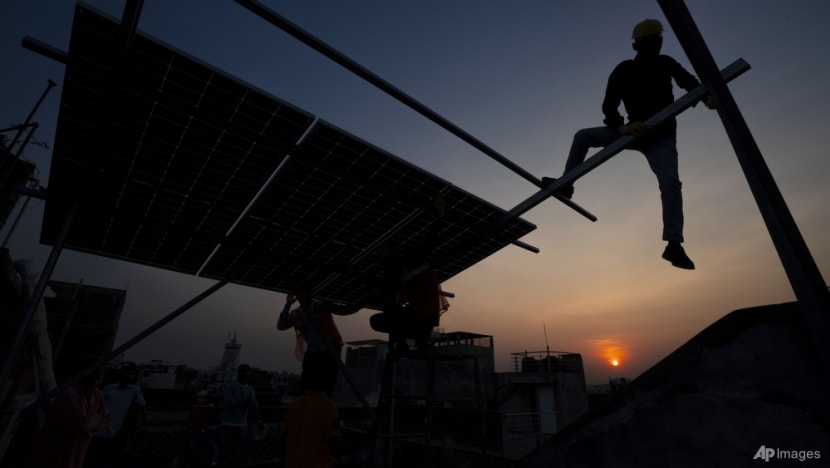India's energy policy stuck between renewables and fossil fuels
The world’s most populous country wants to produce and purchase more oil and gas, while also investing heavily in renewables such as solar and wind power


This audio is generated by an AI tool.
MUMBAI: India is hedging its bets when it comes to its future energy strategy.
The country is investing heavily in renewable energy such as solar and wind power, but also wants to produce and purchase more oil and gas.
In the western state of Gujarat, for instance, rows of solar panels stretching over 500km have been installed over the Narmada Canal - the second-longest canal in India.
“Maintenance of solar plants is very easy,” said Hemanshu Bhatt, co-founder and chief technology officer of solar energy provider InSolare Energy.
“The raw material for solar is free. Like wind, we're getting sunlight for no cost.”
INDIA'S DEPENDENCE ON FOSSIL FUELS
But while India is making strides in renewables, it also wants to produce more fossil fuels.
Earlier this month, India’s parliament passed a Bill to boost its oil and gas exploration and production sector. Prime Minister Narendra Modi is also inviting big energy firms to invest in the industry.
India's Minister of Petroleum and Natural Gas Hardeep Singh Puri recently told CNA that increased production would bring prices down.
“Obviously we have to supply energy to every consumer,” he said. “We have to make it affordable, so the price becomes important.”
However, some analysts believe the gains from domestic oil exploration would be limited, given the country’s lack of proven oil reserves.
India has been importing more oil and gas from the United States. In February, it also pledged to purchase more to balance out its trade surplus.
India’s Foreign Secretary Vikram Misri has said that US energy imports could jump to US$25 billion in the near future, from around US$15 billion last year.
INDIA TO DRIVE GLOBAL OIL DEMAND GROWTH
India's consumption of crude oil is set to soar to 372 million tonnes of oil equivalent in 2033, a 40 per cent jump from 2023, according to the Economist Intelligence Unit.
This would make the country the largest contributor to the world's oil demand growth over the next decade.
But India’s government does not see its oil interests as being at odds with its green energy transition.
Analysts explained that renewables are being used in electricity generation, but still play a limited role in industries such as transport. It is also unable to meet the country’s rising energy appetite in the near to medium term.
“It's a long-term solution,” said InSolare Energy's Bhatt.
“We cannot say that we'll just cut off our imports of oil and gas tomorrow. That can't happen,” he added.
“It will eventually happen. In fact, India has a goal of becoming net zero by 2070, so that's roughly 50 years from now.”
By the end of last year, India's total renewable energy capacity reached nearly 210 gigawatts, a 16 per cent increase from a year earlier.
But this is still a long way to go in the country's target of 500 gigawatts by 2030, said experts.

















